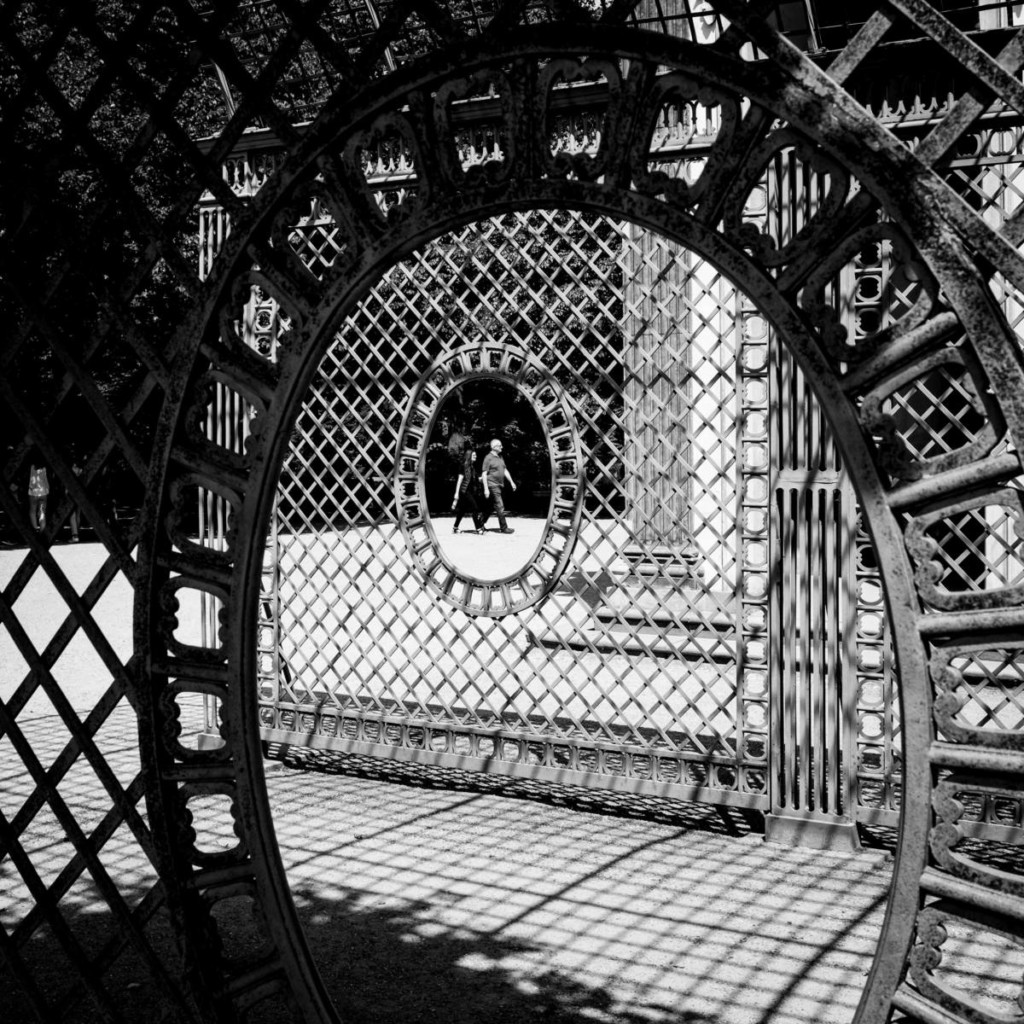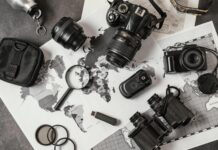The photography world is changing constantly. Trends come and go, certain styles are in fashion only to be frowned upon years later. Street Photography is no exception to this rule. Years ago, Street Photography experienced a hype and got more and more popular. With a genre as complicated and fragile as Street Photography, a lot of the hype attracted photographers that diluted the core of this genre. Posed portraits are now often labeled as “Street Photography” and I see the same motives over and over again plastered over Instagram and other Photography Platforms. Does that mean that Street Photography has been run over by the hype and outlived itself? Is it still relevant in a world where “selfies” show excerpts of our daily life?
The Current State
I already wrote some of my critical remarks about the current state of Street Photography before. The list of negative points remains mostly. Street Photography, by nature, is a very complex genre. Capturing the essence of candid life isn’t something that can be done on the side.
Taking pictures is easy nowadays. With a digital camera you can use the auto-focus, set the camera to auto-exposure and you don’t have to put in additional thoughts to capture an image. That doesn’t mean that the camera will automatically turn your images into quality captures. Photography, on the other hand, is a lot more than simply taking images that are in focus and well exposed. Especially Street Photography requires you to put a lot of effort in getting close to your subjects, without relying on multiple tries and get a good picture.
In a single image, we try to tell a story that reflects the atmosphere of the situation. Out of a two-dimensional plane, we create an image that has depth, both in the story, as well as the visual picture.
There is no real training ground for Street Photography other than the real world. Other genres can rely on artificial studio situations where you can put in countless hours of practice. Street Photography doesn’t offer such an option. You can read about Street Photography, as you do on my blog, or watch Youtube Videos. Nothing comes even close to the real situation when you are out on the street taking pictures.
Therefore Street Photography isn’t something that you can try out for a day and get great results. Even well experienced Street Photographers need to spend hours on the street for a single image that they might find interesting enough to keep.
In a world of instant gratification is there a place for an exercise that needs an insane amount of work, dedication, and sacrifices just for a single image?

My own path
I jumped into Street Photography right away. After overcoming some health deficits I looked forward to putting my new camera into good use. Instead of trying other photography genres first, Documentary Photography fascinated me right away. Inspired by legends like Bruce Gilden I absorbed their work and tried to do the same.
Like anybody else, first I had to learn how to control my camera – a Canon Rebel T3 (or Canon 1100d) with the Kit lens. After some try & error, I quickly learned which focus mode might be the best and what exposure mode yields the best results for me.
Besides studying the established photo books, I spent also a lot of time flicking through social media streams. The sheer amount of images taken and uploaded every day was insane, but there was a lot to learn and simplified, every image was completely new to me.
Silhouettes, stairs, reflections – all these were motives that flashed me. It was very exciting to discover how “creative” photographers can use their environment even in the most boring area.
Living in a metropole that is Berlin, there was a lot to explore for me as well. Discovering the indefinite opportunities of pictures that I could take almost overwhelmed me.
But over time, even in a city like Berlin, I feel that I see the same kind of people over and over again. The pictures are repeating themselves and there is no real progress apart from trying out different styles. Maybe I have exhausted my own creativity and haven’t the drive that I had when beginning?
After I felt to use the 1100d to its fullest potential I chose shorter fixed focal length compact cameras. First, with the RicohGr and now mostly with the Fuji X100F.
“Gear doesn’t matter”. That is only true to some extent. Of course, a better camera doesn’t automatically get you better images. The image quality itself isn’t that important in Street Photography anyway. Street pictures can be gritty and don’t need to be perfectly clean. The difference between the RicohGr and the Fuji X100F is marginal in terms of image quality. Yes, the Fuji has more pixels and a better sensor overall, but that isn’t the reason why I chose this camera. It just feels great to use a viewfinder again and having a camera hanging around my neck. Did I “need” to upgrade? No, but it is more fun and at least a little bit sparked my interest in taking Street images again.
One of the greatest accomplishments of a photographer is when he is known for his unique style. I am far away from developing my own style that only I am known for so that when people see a picture of mine they immediately recognize it as one of mine.
Personally, Street Photography is still challenging. Finding unique situations that tell a story and that I am able to photograph nicely is rewarding. But it get’s harder over time. With every picture I take, I feel like I crossed out one future opportunity. Finding myself in a situation where I refrain from taking a picture because I already have a very similar one in my collection.

Groundhog Day
Although I am just active in the Street Photography community for a little more than two years, I feel that everything around it repeats itself in a very steady pattern. From photos that I see online to blog posts or videos. Everything seems to go the full circle without any new findings. From “why you should photograph in B&W” to reasons why color is actually superior and back to B&W.
Then I go to Instagram to find new inspiration and actually see the same images over and over again. Images that don’t create anything special, but focus on the secure known formula to create popular images.
Social Media might be one part of why I feel that we are going the full circle week after week. Algorithms force photographers to upload new pictures or posts, almost daily to stay relevant. It isn’t enough to post one outstanding image a month to fulfill the thirst for new content. Clearly, quantity is superior to quality to be successful on those social media platforms. But that shouldn’t mean that we are allowed to deteriorate into mediocrity just to feed the beast. When it comes to photography, quality should always come first.
I am no different from that. It is way easier to rely on the most basic principles and go for the images that you feel very secure with. In addition, some of my blog posts are revolving around the same topics only after writing for more than a year already, with small variations.
Keeping it Relevant
And those small variations and new insights are, what keeps Street Photography still relevant for me. In the great scheme of things, there aren’t that many new pictures or styles or even faces we can photograph. But that doesn’t mean that Street Photography is dead.
With millions of images taken and shown every day, there can only be a limited amount of variation. It is sheer impossible to reinvent the genre, week after week to keep it fresh and interesting. As one of the oldest genres with a history spanning probably close to a century, I guess it is quite the success story that so many people are still interested in doing Street Photography and looking at these pictures.
What keeps me interested are those small details and variations that make a picture stand out from the mass. They are rare and hard to find, but it still feels very rewarding to find those little gems and see the unique story in them. Or even looking beyond some limitations and trying Night Street Photography.
Other genres might be moving “faster”, because of technological advancement and new post-processing options. Street & Documentary Photography is unique, in that way that it is very independent of new technology. Cameras don’t really influence the way our pictures come out in the end. Yes, Smartphones are a blessing, because they are always available and have a decent image quality today. But they don’t really change the Street Photography style itself.
Street Photography is a representation of life and reality. With millions of frames popping up every day, we probably have to accept, that not every day is unique and special. In fact, most of us spent our daily lives in routines that make up a huge amount of the day doing “menial” tasks.
Life itself is an ever continuing circle of repetition. Those little details are what makes every effort worthwhile. That force us to spent hours on the street hunting for new inspiration and impressions. We can not reinvent the wheel every day. But with life constantly changing, Street Photography will always be relevant as life itself will always be moving forward.
Nonetheless, taking a few steps back, disengaging from the social media hectic and constant stream of images would bring back the appreciation for every outstanding image and series a little more. It is not the undefinable mass of average pictures that make Street Photography relevant today. But the courage of few very exceptional Photographers that are not afraid to fail. That go the hard route of challenging themselves every day to be creative, to show new angles of life and tell unique stories.
Try to seize every day as the opportunity to find those untold stories, rather than repeating the same chapter over and over again. Leave your own footsteps instead of following other’s trails.
As long as there are Photographers willing to go the extra mile, documenting human life, Street Photography will always be relevant.
Stay Curious
Sebastian Jacobitz





















